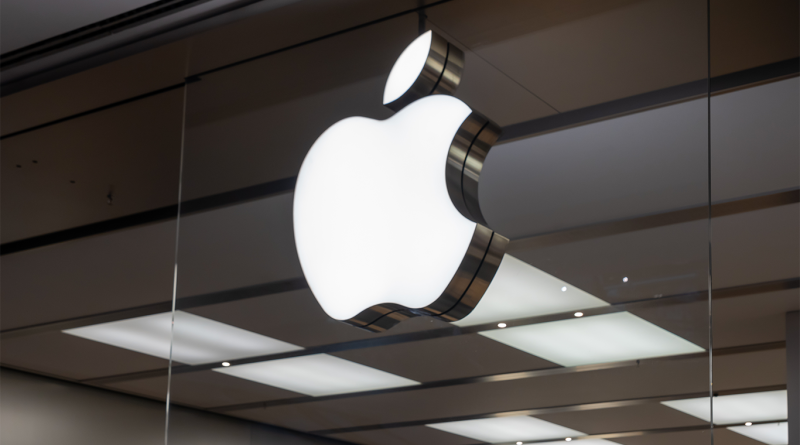The Price of Polish: Understanding Apple’s Control Over Its Ecosystem
In the world of consumer technology, Apple stands as a titan, renowned for its meticulously crafted hardware, seamless software integration, and premium branding. From the ubiquitous iPhone to the versatile iPad, the company has cultivated a fiercely loyal user base. However, this success is often accompanied by intense scrutiny over its business practices. Consumers and regulators alike frequently question the high cost of entry into the Apple ecosystem and the company’s stringent control over its products’ sales channels. The latest iPad news and iPhone news often revolve not just around new features, but also around the economic and legal implications of Apple’s market dominance.
This article delves into the complex architecture of Apple’s “walled garden,” exploring the intricate web of product integration, pricing strategies, and third-party retail agreements that define its market approach. We will analyze the legal frameworks that challenge these practices, examining the ongoing tension between fostering innovation and preventing anti-competitive behavior. By understanding the mechanics behind Apple’s control, consumers and industry observers can gain a more nuanced perspective on the value proposition and the inherent trade-offs of participating in one of the world’s most powerful tech ecosystems. This is a critical topic in an era where digital platforms hold unprecedented influence over our daily lives and purchasing decisions.
Section 1: The Architecture of the Walled Garden
At the heart of Apple’s success is its vertically integrated ecosystem, a carefully constructed environment where hardware, software, and services are designed to work in perfect harmony. This integration is both a primary selling point and a source of significant controversy. It creates a user experience that is often described as intuitive and “just works,” but it also fosters a powerful lock-in effect that makes it difficult for users to switch to competing platforms.
An Interconnected Web of Devices and Services
The modern Apple ecosystem news is less about a single device and more about how a constellation of products communicates. An iPhone is the central hub, but its utility is exponentially enhanced when paired with other devices. For instance, an incoming call can be answered on an Apple Watch, a task started on an iPad can be seamlessly continued on a Mac via Handoff, and audio can intelligently switch between devices with a pair of AirPods. This synergy is a powerful motivator for consumers to purchase multiple Apple products.
Consider the following components:
- Core Devices: The iPhone, iPad, and Mac form the foundation. Recent iOS updates news continues to deepen the integration between these platforms, blurring the lines between mobile and desktop computing.
- Wearables and Audio: The latest Apple Watch news highlights its evolution into a formidable health and fitness device, deeply tied to the Health app on the iPhone. Similarly, AirPods news, including updates for AirPods Pro news and AirPods Max news, focuses on features like Spatial Audio and seamless device switching, which are exclusive to the Apple ecosystem.
- Smart Home and Entertainment: The HomePod news and HomePod mini news showcase Apple’s ambition to control the smart home, with Siri acting as the central voice assistant. Meanwhile, Apple TV news reveals a strategy to make its set-top box a hub for both streaming content and Apple Arcade gaming.
- Accessories and Trackers: Even smaller items like the Apple Pencil news and AirTag news are designed to be indispensable additions. The Apple Pencil turns the iPad into a powerful creative tool, while AirTags leverage the massive Find My network, comprised of millions of Apple devices, to locate lost items—a network competitors cannot replicate.
The Justification: Security and User Experience
Apple defends its closed model by emphasizing user benefits, primarily in security and privacy. The company argues that by controlling both the hardware and the software, it can provide a more secure environment, free from the malware and fragmentation that can plague more open platforms. The latest iOS security news often details new protections built into the operating system, reinforcing this narrative. Furthermore, Apple privacy news has become a cornerstone of its marketing, positioning itself as a guardian of user data in an industry rife with surveillance. This focus on a premium, secure experience is a key justification for its premium pricing and restrictive policies.

Section 2: The Economics of Platform Control and Pricing
Apple’s control extends far beyond its product design; it permeates its entire retail and pricing strategy. The company employs sophisticated methods to maintain brand value and price integrity across global markets, a practice that often attracts legal challenges from regulators concerned about fair competition.
Authorized Resellers and Price Maintenance
A central element of Apple’s strategy is its Authorized Reseller program. To officially sell new Apple products, retailers must agree to a stringent set of terms and conditions. These agreements often dictate how products can be displayed, marketed, and sold. While explicit price-fixing is illegal, companies can use policies like a Minimum Advertised Price (MAP) to influence retail prices. A MAP policy prevents resellers from advertising a product below a certain price, thereby reducing price-based competition and preventing brand dilution.
This control ensures that whether a customer buys an iPhone from Apple’s website, a big-box store, or a premium reseller, the price is likely to be very similar. This strategy has been a hallmark of Apple’s approach since the days of the first iPod, and examining old iPod news, from the iPod Mini news to the iPod Classic news, shows a consistent pattern of brand and price control. This meticulous management is also evident in current Apple TV marketing news, where the focus is on the value of the service bundle (Apple TV+) rather than hardware discounts.
Case Study: A Hypothetical Reseller Agreement
Imagine a large, third-party online marketplace wants to be the primary seller for a new, highly anticipated smartphone. The phone’s manufacturer might enter into an agreement that grants this marketplace preferential treatment, such as a more reliable supply of inventory. In return, the marketplace might agree to actively police its platform, removing listings from unauthorized third-party sellers who are offering the same product, often at a lower price. From the manufacturer’s perspective, this cleans up the marketplace and protects its brand from being associated with potentially counterfeit or refurbished goods sold as new. However, from a consumer and regulatory perspective, this could be seen as an attempt to eliminate lower-priced competitors and artificially inflate the market price, limiting consumer choice.
This dynamic is at the core of many antitrust investigations into major tech companies. The question is whether these actions are legitimate business practices designed to protect a brand and ensure a quality customer experience, or if they cross the line into anti-competitive behavior that harms the market.
Section 3: The Legal Gauntlet and Future Frontiers
The tension between Apple’s ecosystem control and antitrust law is a defining battleground in modern tech. Regulators in the United States, Europe, and Asia are increasingly scrutinizing the practices of large digital platforms, and Apple is frequently in the spotlight.
Antitrust Principles in the Digital Age

Antitrust laws are designed to prevent monopolies and promote fair competition. In the context of Apple, legal challenges often focus on several key areas:
- Tying: Is Apple illegally “tying” the purchase of one product (e.g., an iPhone) to another (e.g., the App Store)? Regulators question whether Apple’s control over iOS app distribution gives it an unfair advantage.
- Exclusionary Conduct: Do Apple’s policies, such as its restrictions on third-party repair or its control over NFC technology for payments, unlawfully exclude competitors from the market?
- Price Control: Do its agreements with retailers amount to a coordinated effort to keep prices artificially high, limiting the ability of sellers to compete on price?
Apple’s defense often leans on the arguments of security, privacy, and innovation. The company contends that its control is necessary to protect users, and that the revenue generated from its ecosystem is reinvested into research and development for new products and services. The ongoing stream of Apple health news, detailing new life-saving features on the Apple Watch, and Siri news about its evolving capabilities are often presented as fruits of this integrated model.
The Next Frontier: AR and the Metaverse
The legal battles of today will undoubtedly shape the competitive landscape of tomorrow. All eyes are on Apple’s next major platform, as detailed in the latest Apple Vision Pro news. This foray into augmented and virtual reality represents a new ecosystem in the making. The questions are already emerging: How open will the Vision Pro platform be? Will developers face the same restrictions as they do on the App Store? The development of new input devices, with speculative Vision Pro wand news and Apple Pencil Vision Pro news, suggests a new generation of proprietary Apple accessories news that could further lock users into Apple’s AR world. The evolution of Apple AR news will be closely watched by regulators to see if old patterns of control are replicated in this new technological frontier.
Section 4: Practical Implications and Consumer Strategies
For the end-user, Apple’s walled garden is a double-edged sword. The benefits are tangible, but so are the costs. Understanding this dynamic allows for more informed purchasing decisions.
Pros and Cons for the Consumer
Pros:
- Seamless Integration: The ecosystem offers a user experience that is difficult for competitors to match.
- High Resale Value: Apple products tend to hold their value better than their Android or Windows counterparts.
- Security and Privacy: A strong track record of protecting user data and providing timely iOS updates news with security patches.
- Customer Support: Generally high-quality customer service and a robust retail presence.
Cons:
- High Cost of Entry: Premium pricing across the entire product line, from iPhones to accessories.
- Vendor Lock-In: The seamless experience makes it costly and inconvenient to switch to other platforms.
- Limited Choice and Customization: Users have less freedom to customize their devices or use non-Apple services and hardware.
- Repair Costs: Official repairs can be expensive, and third-party repair options are often limited.
Tips and Considerations for Savvy Consumers
- Buy Refurbished: Apple’s certified refurbished store offers products that are virtually new, with the same warranty, at a significant discount.
- Wait for Sales Cycles: While direct discounts are rare, retailers often bundle Apple products with gift cards or other promotions during major holidays.
- Evaluate Your Needs: Don’t assume you need the entire ecosystem. An iPhone can work perfectly well with a Windows PC or non-Apple headphones. Assess which parts of the ecosystem provide genuine value to you.
- Explore Nostalgic Tech: For specific needs like dedicated music playback, some users are driving a small but interesting trend in iPod revival news, seeking out older devices like the iPod Classic or iPod Shuffle for their simplicity. While not a mainstream solution, it highlights a desire for focused, single-purpose devices outside the all-encompassing ecosystem.
- Stay Informed: Keep up with iPad news and other product announcements. Sometimes, last year’s model offers 95% of the performance for a fraction of the price of the newest release. For creative users, staying on top of trends like using an iPad for digital planning, often covered in iPad vision board news, can maximize the value of the device.
Conclusion: A Delicate Balance of Power
Apple has masterfully engineered a digital fortress that is both alluring and restrictive. The seamless integration, robust security, and premium user experience of its ecosystem are undeniable draws for millions of consumers. However, this meticulously controlled environment comes at the cost of consumer choice, open competition, and often, higher prices. The legal and regulatory scrutiny surrounding Apple’s pricing and retail strategies is not merely an abstract corporate battle; it directly impacts the prices consumers pay and the options available to them.
As technology evolves with advancements in AI, AR, and connected health, the debate over platform power will only intensify. For consumers, the key is awareness. Understanding the trade-offs of the walled garden, employing savvy shopping strategies, and recognizing the long-term costs of ecosystem lock-in are essential. Ultimately, the future of the digital marketplace depends on finding a sustainable balance between rewarding innovation and ensuring that the digital gates remain open enough for healthy competition to thrive.











